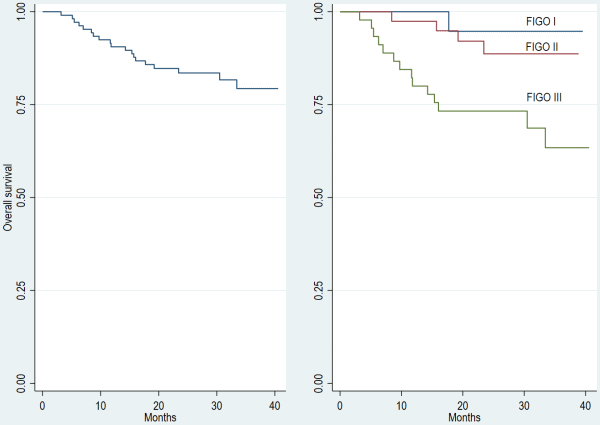Image-guided brachytherapy for cervical cancer – Experience at Carlos Van Buren Hospital
Jose Antonio Solis Campos,
Chile
PO-1421
Abstract
Image-guided brachytherapy for cervical cancer – Experience at Carlos Van Buren Hospital
Authors: Lisset González Abascal1, Gabriel Lazcano Álvarez2, Jose Solis Campos2, Benjamin Tudela Staub2, Gabriel Veillon Contreras2, Jorge Olivares Gonzalez3
1Universidad de Valparaiso, Radiation Oncology, Valparaíso, Chile; 2Universidad de Valparaiso, Radiation Oncology, Valparaiso, Chile; 3Hospital Base de Valdivia, Radiation Oncology, Valdivia, Chile
Show Affiliations
Hide Affiliations
Purpose or Objective
External beam radiation therapy with concomitant chemotherapy followed by adaptive image-guided brachytherapy (IGABT) is the standard of care for patients with locally advanced cervical cancer (LACC). The purpose of this study is to describe the outcomes of the IGABT protocol at the radiation oncology department of the Carlos Van Buren Hospital (Valparaíso, Chile)
Material and Methods
A retrospective cohort study was carried out to analyze the results of patients with LACC treated with concomitant radiochemotherapy followed by IGABT with curative intent between 2019 and June 2021.
Results
The cohort includes 106 patients, whose characteristics are presented in Table 1.
Table 1.- Patients and treatment characteristics
| Variable | N (%) or median [IQR]
|
| Age (years) | 47 [37-49] |
ECOG status 0 1 2 3-4 |
95 (89.62) 10 (9.43) 1 (0.94) 0 (0) |
| Tumoral size (cm) by physical examination | 4.5 [4-5] |
Histology Squamous cell carcinoma Adenocarcinoma Others |
90 (84.91) 13 (12.26) 3 (2.83) |
FIGO Stage IB1
IB2
IB3
IIA1
IIA2
IIB
IIIB
IIIC1
IIIC2
IVA
|
1 (0.94)
4 (3.77)
16 (15.09)
4 (3.77)
2 (1.89)
33 (31.13)
5 (4.72)
34 (32.08)
6 (5.66)
1 (0.94)
|
PET CT staging
| 39 (36.79)
|
EBRT technique
3DCRT
VMAT
|
58 (54.72)
48 (45.28)
|
Treatment compliance was 99.06%, with a median of 5 cycles of weekly cisplatin administered (IQR 4-5); 7 patients (6.6%) received no chemotherapy. Brachytherapy was administered in a median of 3 HDR sessions (IQR 3-3) to obtain a median total EQD2 prescribed to CTV-HR of 83.6 Gy (IQR 83.6-85.5). Overall treatment time had a median of 53.5 days (IQR 50-57).
The median follow-up was 26.3 months (IQR 19.9-34.7). Two-year overall survival was 83.5% (95% CI 74.8-89.4). Two-year OS was 94.7% (68.1-99.2) for stage I patients; 88.7% (72.3-95.6) for stage II patient; 73.3% (57.7-83.8) for stage III patients (Figure 1). RTOG acute urinary toxicity was grade 0 in 69.81% of the patients, grade 1 in 24.53%, grade 2 in 1.89% and grade 4 in 0.94%. Acute gastrointestinal toxicity was grade 0 in 47.17%, grade 1 in 25.47%, grade 2 in 18.87% and grade 3 in 5.66%, with no grade 4 events reported. There were 0 grade 5 events overall.
Figure 1.- Overall Survival for the whole cohort and by FIGO staging

Conclusion
Image-guided adaptive brachytherapy allows personalized treatment, achieving excellent oncological results associated with an acceptable toxicity profile.